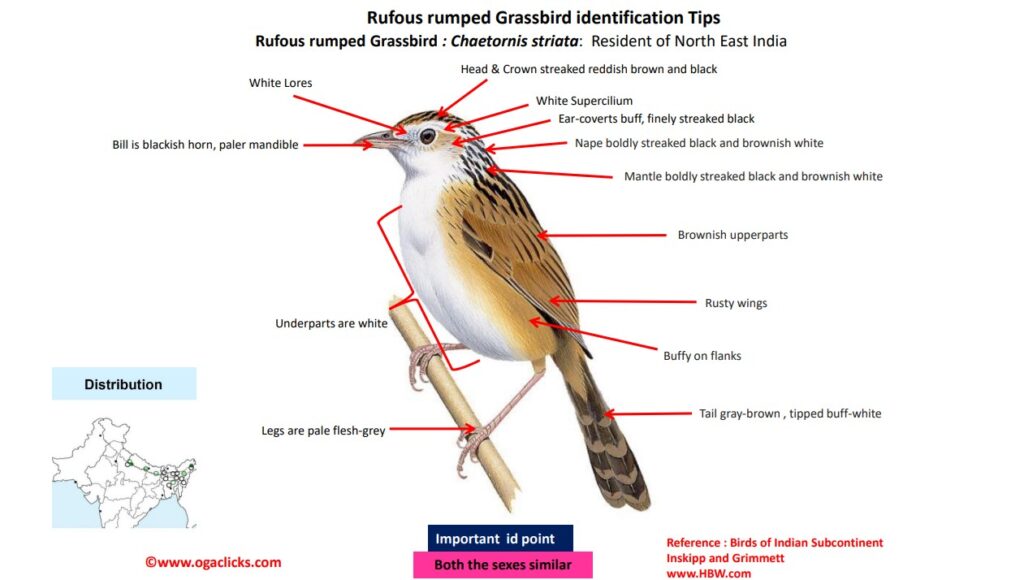
Rufous-rumped Grassbird / Indian Grassbird Graminicola bengalensis
Etymology:
- Graminicola : Latin word gramen, graminis – grass; cola- dweller
- Bengalensis : From Bengal in India
Distribution in India: Resident of plains of North East India .
Description: Size of 16–18 cm; weight of 13–16·5 g. It is a boldly marked grass-babbler with broad graduated tail only moderately tapered. The adult in fresh plumage has streaked reddish brown and black crown that becomes almost blackish when worn, contrasting whitish supercilium. The ear-coverts are buff, finely streaked black. the nape and mantle are boldly streaked black and brownish white ,the streaking becomes blacker and whiter with wear, contrasting rufous rump streaked blackish especially on uppertail-coverts and rusty wings. The tail is grey-brown that is darkest on central feathers, broad white feather tips. It is whitish below, flanks and undertail-coverts are rufous-buff becoming whiter with wear. The iris is light brown to reddish brown; bill is blackish horn, paler mandible; legs are brownish flesh to pale flesh-coloured. . Both the sexes are similar, male is larger than female. The juvenile is browner overall than adult, with dull brown tail, rectrices very narrowly tipped buffish.
Habitat: It is found in lowland wet grassland, reed-swamp and other emergent vegetation by canals, rivers and lakes.
Food habits: It eats small invertebrates. It is encountered singly or in pairs. It keeps well hidden, and very elusive. Once flushed, is very difficult to relocate after it has dived back into cover.
Breeding habits: They breed in Jul and Aug to coincide with monsoon, in India. The pre breeding ritual includes a short song flight, suddenly rises into air and drops back into cover. The nest is a deep cup of sedges and plant fibres, lined with fine grass roots. They lay a clutch of 4 eggs.